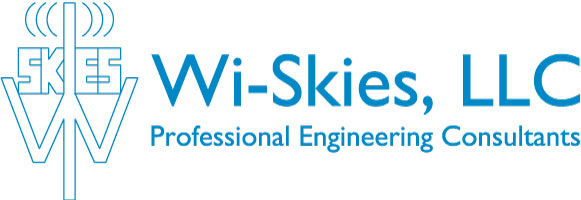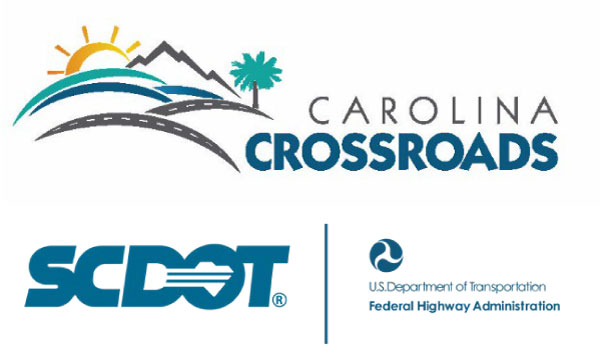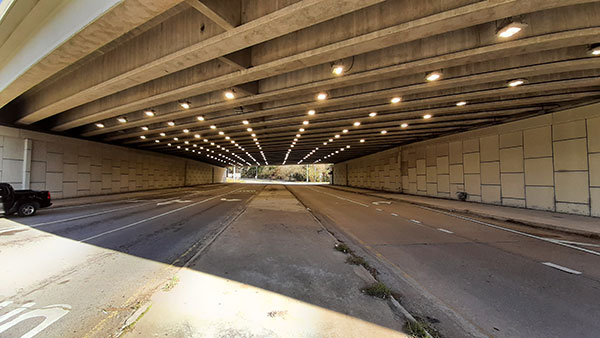Carolina Crossroads
Wi-Skies has partnered with Infrastructure Consulting & Engineering (ICE) and have won the first two phases for this massive design-build effort, which is the largest construction venture in South Carolina transportation history!
This five-phase project will improve fourteen miles of I-20, I-26 and I-126 that includes the area commonly called “Malfunction Junction”. We are providing the lighting design for these two phases, which includes both high mast towers along the interstates and interchanges as well as conventional roadway lighting along the ramps and side streets. Phase 2 includes a complex Diverging Diamond Interchange at the crossing of US176 and I-20.
Please see further information here for the Carolina Crossroads overall project on their website.
Georgia Dept. of Transportation (GDOT) Design-on-Request Services
Wi-Skies has operated as an extension of GDOT staff as an in-house consultant to the GDOT Lighting Group since 2014, assisting them with many of their daily initiatives. Operating as GDOT’s lighting subject matter expert, Wi-Skies frequently makes policy decisions or provides guidance on a myriad of issues. With full-time staff physically located at GDOT, we assist GDOT in their daily operations, such as approving permit submittals, lighting plan reviews and revising and maintaining Chapter 14 of the Design Policy Manual, reviewing and revising pay items and specifications, and identifying and developing design standards to be adopted by GDOT.

We have been instrumental in assisting GDOT in enhancing their policies as well as providing design guidance for photometrics and plans submitted for approval. Our expertise has been called upon by the group to assist in daily challenges the group faces, such as providing lighting recommendations for programmed projects, providing cost estimates for both new and existing lighting installations which are often provided directly to the Chief Engineer.
Illinois DOT Design-on-Request Services
We provided the Illinois DOT Lighting and Mechanical Division with high-end policy reviews and modifications and guidance on significant decisions regarding policy. We had staff located in-house in a full-time capacity providing and reviewing lighting designs across the state.

Additionally, we assisted IDOT in several high-level tasks such as revising Chapter 56 of their Bureau of Design and Environment Manual, revising the LED specification and identifying and developing design standards to be adopted by IDOT. We were involved several research projects, such as high mast tower applications, revised voltage drop considerations for LED technologies as well as environmental impacts of roadway lighting. We also developed IDOT’s Intersection Design Guide, which encapsulates the practical approach to many of the recommendations now found in IES’ RP-8 as well as the AASHTO Roadway Lighting Design Guide.
Stand-alone Lighting I-75 from Pierce Ave to Arkwright Rd (GDOT)
This stand-alone lighting project provided 3.5 miles of mainly high mast lighting along I-75 from Pierce Ave to Arkwright Rd. As the area had been recently constructed without lighting in mind, several construction issues arose such as drainage and other utility conflicts, impacts of environmental documents and other complications, all of which had to be avoided. The project includes survey, geotechnical studies, reconstruction of new walls and guardrail installation along certain areas. Joe is overseeing all of these design aspects along with the lighting design, consisting of photometric calculations, lighting plans, specifications and cost estimates for the corridor, including three interchanges, four underpasses, daytime lighting for one tunnel and horizontal and vertical illuminance at historical ROW, as well as the development of several unique installation details.
Sunny Isles Beach, FL Lighting Inspection
Wi-Skies was brought in to inspect approximately 130 decorative teardrop light poles installed along Collins Ave (A1A), which were recently installed as part of an FDOT project. Unfortunately, much of the electrical work done by the contractor was not done in accordance with FDOT specifications or the plans and the Construction Engineering Inspection (CEI) group did not catch the mistakes. This resulted in the failure of all of the lights within months of being turned over to the City.
Most of these issues were related to the fact that the contractor did not use outdoor rated cabling throughout the project and utilized indoor rated transformers to power festoon outlets near the top of the pole. Our primary responsibility was to inspect the lighting system and identify the critical issues for a different contractor to provide an expedited repair. Providing documentation for potential litigation is one of our secondary functions on this project. The contractor also drilled the poles with holes to mount externally mounted transformers near the pole base, which put into question the structural integrity of the poles, especially given the 150 MPH wind zone area the poles resided in. After working with the pole manufacturer, however, it was determined that the holes did not impact the structural integrity and the warranty was still valid.
After completing a physical inspection of many of the light poles and adjoining handholes within the project limits, we developed a report for the City to use for future litigation.
Langford Parkway Lighting Rehabilitation
Langford Parkway is a major thoroughfare which connects I-285 to I-85 north of the Atlanta airport in the southwest side of the city. The corridor was originally built as an urban collector, but over time has become an access control freeway with entrance and exit ramps. However, urban curb still exists in portions of the roadway and the lighting was installed based on the original urban collector setting and subsequent setbacks. Because of this, most of the lighting installed on the outside of the roadway is within unprotected clear zone and subject to frequent knock-downs.
As the entire 6.5 mile corridor is continuously lit, this results in a lot of maintenance. To properly address this situation, coupled with inadequate lighting, the recommendation was made to provide a new lighting system through the corridor which will increase pole setbacks coupled with barrier protection as warranted. This new lighting system will also replace and upgrade the existing lighting along the median wall, where applicable. As the corridor was untouched for decades, full survey, LIDAR and SUE is necessary, which we coordinated through our sub-consultant. The entire electrical system, including service point locations, cabling and conduit except for that within the barrier walls for the lighting system will be replaced as part of this project.
Tucker Summit CID Lighting
The Tucker Summit CID engaged Wi-Skies to assist them in assuring a proper lighting design is ultimately delivered on the streets within the CID. Our task is to work with the power company to either review their supplier’s lighting design or provide a design in typical sections for the power company to install in specific corridors. In total, there are over 15 miles of roadways, both commercial and industrial, to be retrofitted. Wi-Skies will be reviewing the current installation areas along with adding lighting in desired areas within the CID.
Iowa Department of Transportation Lighting Non-Design Services
We have provided the Iowa DOT with high level lighting support since 2016, where we have spearheaded several statewide initiatives including developing a Lighting Design Manual, revising lighting standards and developing their LED specification. We provide lighting design reviews from other firm designs and develop lighting master plans and retrofit projects. We have also evaluated many short tunnels to determine warranting for daytime lighting installations and implemented an experimental approach for daytime lighting within short tunnels.
Tennessee Department of Transportation Lighting Design Services
Wi-Skies led the effort to overhaul the Tennessee DOT’s lighting policy manual, specifications and standard drawings. Much of this work is essential due to evolving technologies and national recommended practice, but also due to debatable language and directive within the existing policies that put the Department at risk for design-build efforts. Our experience on the other side of the negotiating table provided invaluable insight to improved contract language which would be difficult to debate in the future. This work also includes adding several standard drawings to streamline the design and construction work throughout the state.



